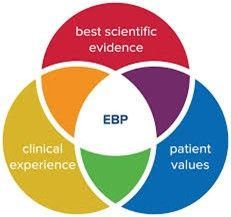Is Treatment Becoming More Important than Documentation?
For years, Medi-Cal (or Medicaid) mental health services emphasize the value of reimbursement over treatment. What a practitioner did with a client didn’t matter as much as what they wrote down on paper or in an electronic health record. This strategy could be seen in the stress auditors and governmental agencies put on the documentation. Agencies would have revenue recouped, sometimes in the hundreds of thousands of dollars, because notes weren’t written properly. Subsequently, agencies focused more on the note than the care. As a result, clients weren’t seen, access was stifled, and outcomes didn’t improve.
Now, in California, the Department of Health Care Services (DHCS) is involved in the California Advancing and Innovating Medi-Cal (CalAIM) project. CalAIM has three primary goals:
- Identify and manage member risk and need through whole person care approaches and addressing Social Determinants of Health;
- Move Medi-Cal to a more consistent and seamless system by reducing complexity and increasing flexibility; and
- Improve quality outcomes, reduce health disparities, and drive delivery system transformation and innovation through value-based initiatives, modernization of systems, and payment reform.
Recently at a meeting of provider agencies in Los Angeles County, further information was discussed about proposed changes to Medi-Cal mental health services. These changes include the following:
Allowing reimbursement of treatment services before the diagnosis is made. Previously, treatment could only begin after the practitioner made a diagnosis. Because diagnoses sometimes took weeks to determine, the treatment process was delayed; this change would expedite care.
Creating criteria for children to access services based on the experience of trauma and risk of future health conditions. Now clients would qualify for services not only if their conditions posed a functional impairment, but if they were at high risk of these impairments.
Change documentation so that:
Treatment plans would be replaced with problem lists. With a problem list, the verbiage to discuss goals, objectives, and interventions would be substituted with a checklist of symptoms or behaviors to address in care. This would reduce documentation time significantly.
Progress notes would no longer tie to the treatment plan but reflect the care and the billing codes. The practitioner could focus more on the client’s care at the moment than documentation.
Auditing would focus more on fraud, waste, and abuse, instead of documentation. The wrong note would be considered a “teachable moment” instead of recoupment.
All these ideas take documentation and give it a back seat to the real reason most providers got into the business; to help heal the clients that are served. If DHCS goes through with these ideas, it will be the biggest and most advanced change in over 30 years, leading to more clients being served and improved treatment outcomes.
For more information about Praxes' services in consulting, training, and treatment software, please contact us.




